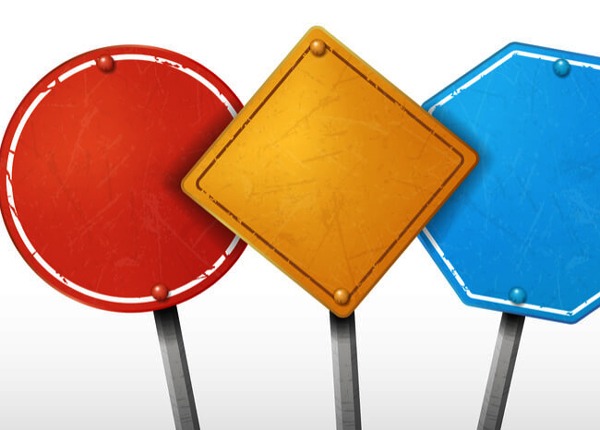
Work Zone & Highway Construction Signs in 2022: Beyond The Driving Test
Updated Nov. 30, 2021Most road signs used around highway construction and maintenance sites are orange, with black text or symbols. You will encounter these signs if work being conducted on or close to the roadway presents a hazard and demands that drivers proceed with caution and reduce their speed.
Work zone warning signs may be rectangular or diamond-shaped. They warn drivers of various potential hazards around the work area, such as:
- The presence of flaggers directing traffic
- Detours
- Lane or road closure
- Dangerous work being carried out
- Hazardous materials on or near the roadway
- Slow traffic ahead
For instance, the sign below indicates that construction, maintenance or utility workers are occupying to work site up ahead.
Work zone signs may also instruct drivers to take a certain action, for instance: “BE PREPARED TO STOP.”
Work zone traffic control devices
Other traffic control measures may be installed around construction and maintenance zones to support road signs in directing road users. These include:
- Electronic signals, featuring messages or directional arrows
- Barricades or panels surrounding a hazardous area, often marked with white and orange stripes
- Striped drums, tubes or orange cones indicating areas which are off-limits to vehicles
Construction site detour signs
Detour signs may be posted around a construction zone if entire stretches of road are closed while work is being conducted. Slow down as you approach a detour, to give yourself more time to identify the route you must take around the worksite. Follow all instructions given by detour signs and proceed with caution.
Construction and maintenance zone safety
As construction and maintenance zones pose a threat to both motorists and workers, all drivers must move through them with extreme caution. Irresponsible driving could leave you or another road user seriously injured - or end up costing you a lot of money. Depending on the laws in your state, you could be subject to a doubled or substantially higher fine if caught committing a traffic violation in a work zone. Information on work zone fines can be found in your state’s driver handbook.
To stay safe around roadway construction and maintenance sites:
- Reduce your speed.
- Obey all road signs, traffic control devices and persons directing traffic.
- Be prepared to stop.
- Drive with additional caution.
Check out our highway construction zone article for a detailed discussion of work zone risk, along with a complete list of safety rules. Alternatively, view this comprehensive collection of work zone road signs.




